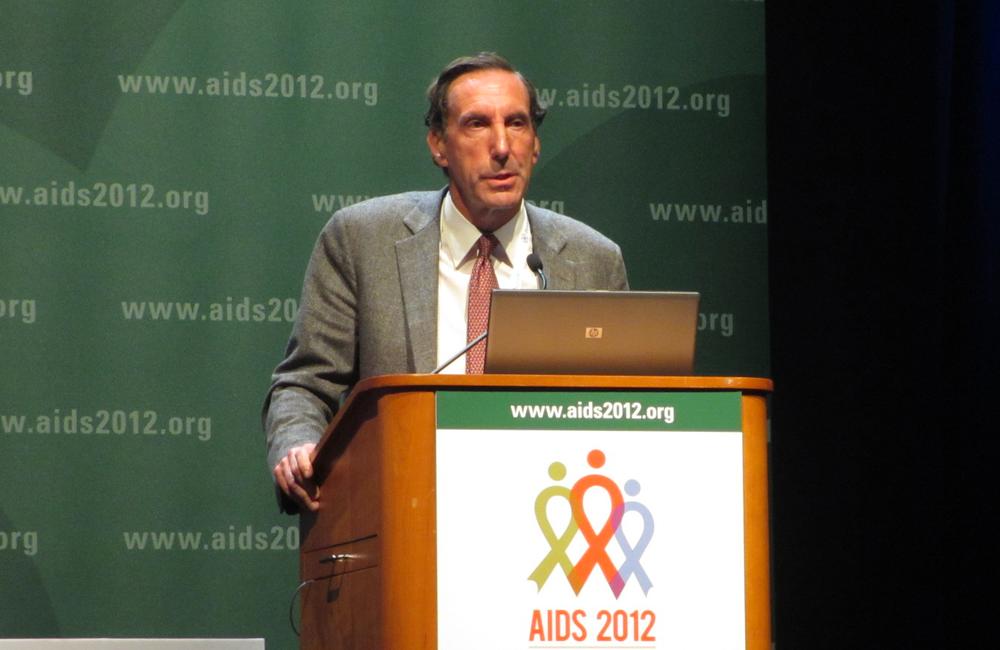
Clinicians need to retain expertise in managing AIDS-defining conditions despite treatment advances
Large overall declines in opportunistic infections (OIs) among people with HIV in the US mask continued high rates in inner city populations, according to a presentation on Monday at the 19th International AIDS Conference (AIDS 2012) in Washington, DC.
Henry Masur from the US National Institutes of Health gave an overview of trends in epidemiology of OIs in the era of combination antiretroviral therapy.
Some large, prominent studies of well-characterised populations under care have shown that rates of OIs – infections that strike people with compromised immune function – have decreased dramatically since the advent of effective HIV treatment.
The HIV Outpatient Study showed precipitous declines in OI incidence from the mid-1990s to the present. Cytomegalovirus (CMV) infection, for example, fell from about 60% in 1995 to under 10% from 2000 onward.
Similarly, the NA-Accord trial, which included more than 65,000 participants, found that overall life expectancy of people with HIV at age 20 rose from 27 additional years during 1996-1999 to 52 additional years during 2006-2007.
While data such as these have received much attention, they do not do justice to certain groups including injecting drug users, African Americans, and people who come into care with low CD4 cell counts.
According to Masur, people with HIV can be classified into two populations: those who are under care and benefitting from advances in treatment; and those who access care late or have difficulty with adherence, and therefore do not fare as well.
The National Hospital Discharge Survey, conducted annually by the US Centers for Disease Control and Prevention, looked at HIV-positive people at 450 short-stay hospitals in the 50 states.
The survey showed much smaller declines in most OIs than those seen in the larger, more comprehensive studies.
CMV did decline steeply in the hospital population, but Mycobacterium avium complex (MAC), oesophageal candidiasis and Pneumocystis pneumonia saw smaller, fluctuating declines. MAC and candidiasis, for example, reached a low in the early 2000s before rising again.
Masur concluded that OIs are still a common cause of hospitalisations and still responsible for "considerable cost and morbidity to patients".
Turning to some data from South Africa – which also apply in the US – Masur explained that deaths due to OIs typically occur both before starting antiretroviral therapy and during the first three months on treatment. Starting antiretrovirals can unmask unrecognised OIs, trigger immune reconstitution inflammatory syndrome (IRIS) and, in some cases, cause medication toxicities.
Unlike much of the rest of the world, tuberculosis is relatively uncommon in the US – with only about 11,000 reported cases per year – and only 10% of cases are in people with HIV.
Looking at HIV-associated hospital diagnoses, thrush (oral candidiasis) was the most common in both 1996 and 2006. CMV fell off the 2006 list entirely. Pneumocystis pneumonia and pneumonia of unknown type ranked fourth and fifth, respectively, in 1996, compared with seventh and second in 2006.
New conditions that made the list in 2006 – due to people with HIV living longer – included hypertension, "tobacco use disorders", acute and end-stage kidney disease, congestive heart failure and hepatitis C.
An analysis of co-infections among people with HIV in Washington, DC, found that about 2% had gonorrhoea, 3% had chlamydia, 4% had hepatitis B and 7% had hepatitis C (HCV).
One-third of people with HIV are thought to have hepatitis C overall, rising as high as 90% among injecting drug users. HIV/HCV co-infection is associated with faster liver disease progression and poorer response to hepatitis C treatment.
Masur suggested that it is important to study to what extent accelerated inflammation – increasingly recognised as a problem for people with HIV as they live to older ages – is related to other infections.
Half of people with HIV in the US live in twelve cities: Atlanta, Baltimore, Chicago, Houston, Los Angeles, Miami, New York, Philadelphia, San Francisco and Washington, DC. All have inner-city neighbourhoods with large minority/non-white populations and high poverty rates.
While the apparent decline in HIV/AIDS cases in some cities may in part be due to more testing, better care and – hopefully – less transmission, Masur cautioned that it may also reflect marginalised populations being driven out of inner cities due to gentrification.
Poor outcomes among people with HIV reflects the "cascade" of decreasing numbers as they move from diagnosis to linkage into care to continued treatment to sustained undetectable viral load. In Washington, DC, just 1391 out of 4879 people diagnosed with HIV maintained viral suppression during 2005-09.
Masur warned not to be lulled into thinking that opportunistic infections have been eliminated as a problem for people with HIV. Furthermore, healthcare workers may be losing expertise in managing opportunistic conditions as they see fewer cases.
"Early initiation of antiretroviral therapy is the best preventive intervention," Masur concluded. "We need to do a more effective job with our most effective tool."
Masur H Changing epidemiology of OIs in the HAART era 19th International AIDS Conference, abstract MOAB0105, Washington, DC, July 2012.
View the slides from the presentation on the conference website.
